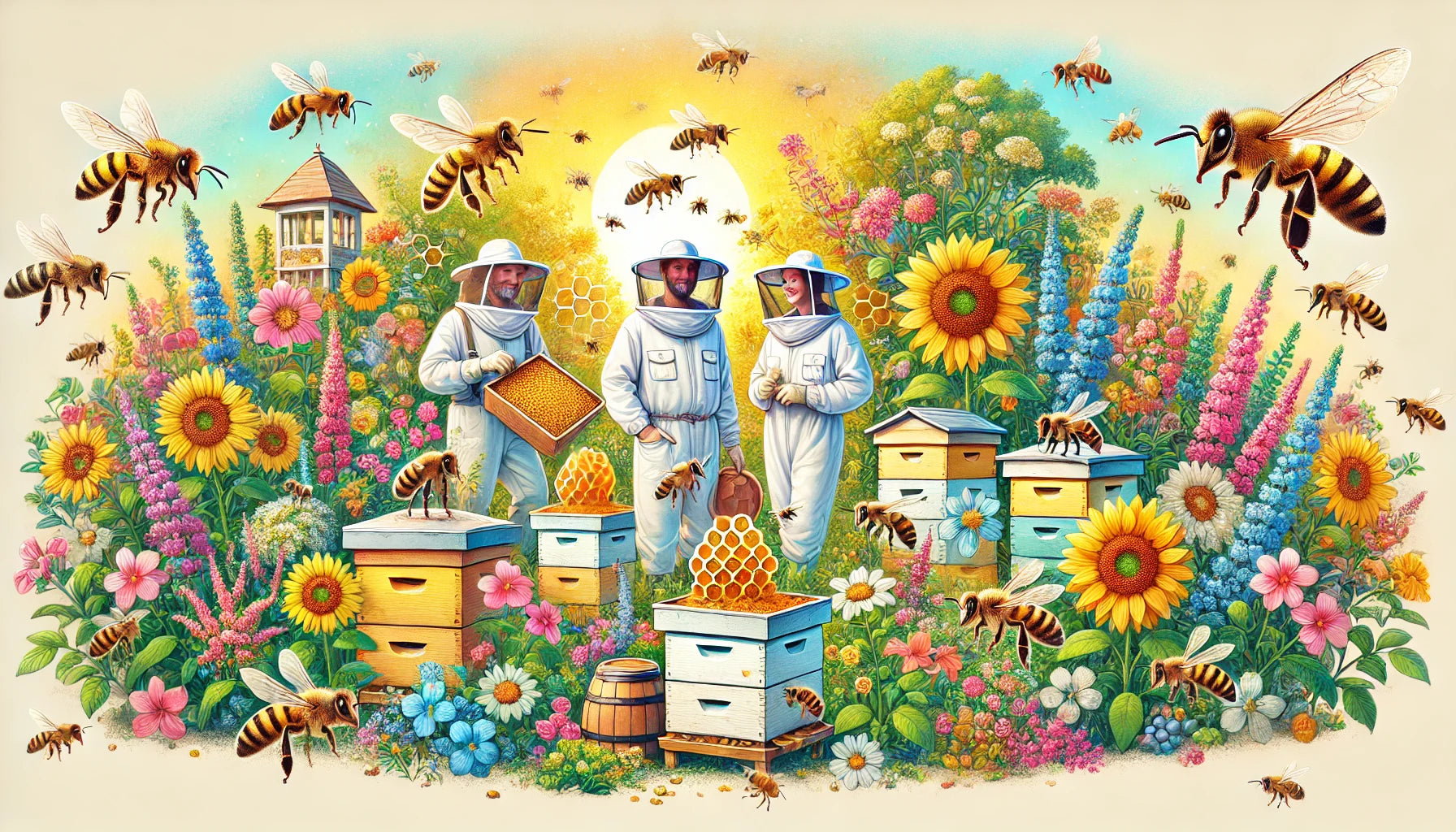Honey bee cultivation is a rewarding practice that produces honey and supports biodiversity and pollination. If you’re interested in how to start a bee farm, setting up hives and caring for bees properly will ensure a thriving colony. This guide covers everything you need to know to start cultivating bees, from understanding bee behavior to creating a sustainable beekeeping operation.
Getting Started with Honey Bee Cultivation
Starting a honey bee colony requires understanding the basics of bee behavior, selecting suitable equipment, and preparing a safe environment for your bees.
- Choosing the Right Hive: Common options for beekeeping include the Langstroth, Top Bar, and Warre hives. The Langstroth hive is widely used by beginners and professionals alike, as it provides easy access for honey harvesting and hive inspections.
- Selecting Bee Species: Honey bees come in various species, each with different behaviors and requirements. For new beekeepers, the Italian honey bee is a popular choice due to its gentle nature and productive honey-making capabilities.
- Preparing the Hive Location: Place your hives in an area that receives ample sunlight, is shielded from strong winds, and has easy access to water. A quiet spot away from frequent human activity ensures bees feel safe and are less likely to be disturbed.
Creating a bee-friendly environment gives your colony the best chance of establishing itself successfully.
How to Cultivate Bees for Pollination and Honey Production
Effective bee cultivation not only produces honey but also promotes pollination, supporting gardens and agricultural crops. Here are key aspects to focus on:
- Providing a Diverse Forage Source: Bees need access to a variety of flowering plants for a balanced diet. Planting a mix of native flowers and crops ensures bees have nectar and pollen sources throughout the season. For more pollination success, select plants with staggered blooming times.
- Managing Honey Production: As bees collect nectar and produce honey, you’ll need to monitor hive frames to assess when they’re ready for harvesting. Be mindful of not over-harvesting, as bees rely on honey for food during colder months.
- Pollination Benefits: Beyond honey, bees significantly boost the pollination of fruits, vegetables, and flowers, supporting a healthier environment. Their role in crop production underscores why honeybees are so vital to agriculture.
These practices ensure a sustainable balance between bee welfare, honey production, and pollination benefits.
Essential Bee Care Practices for Successful Cultivation
To maintain a thriving bee colony, consistent care and hive management are essential. Below are key areas to focus on:
- Regular Hive Inspections: Check your hives every 7-10 days to monitor bee health, look for signs of disease, and assess honey stores. Inspections also help you identify any hive pests or intrusions early, making it easier to address problems promptly.
- Pest and Disease Management: Common hive pests include mites, beetles, and moths. Natural solutions like beetle traps for beehives help keep hives free from infestations, preserving bee health without harmful chemicals.
- Winter Preparation: Bees need ample honey reserves to survive winter. Reduce hive entrances to retain heat, remove extra honey supers, and ensure ventilation to prevent condensation. Preparing your hive for winter enhances the bees’ chances of survival through colder months.
With these practices, you’ll be better equipped to maintain a healthy bee colony, ensuring both bees and honey thrive.
Sustainable Practices in Honey Bee Cultivation
Eco-friendly beekeeping aligns with conservation goals and promotes long-term bee health. Sustainable practices benefit bees, your garden, and the surrounding environment.
- Supporting Native Pollinators: While honey bees are effective pollinators, supporting local bee species enhances biodiversity. Planting native flowers and reducing pesticide use creates a safer environment for all pollinators.
- Humane Hive Relocation: If hives need to be moved, opt for bee hive relocation methods that protect the colony. Relocation helps you manage hive placement without harming bees.
- Ethical Honey Harvesting: Practice ethical harvesting by leaving enough honey for the bees’ survival, especially before winter. This ensures the bees have sufficient food stores, supporting their health and productivity.
These sustainable practices contribute to a balanced ecosystem, promoting environmental health and bee population stability.
Cultivate Bees with Swarm Commander Tools
Honey bee cultivation is more than a hobby—it’s a way to support nature and enjoy the benefits of honey and pollination. By following responsible beekeeping practices, you can create a successful bee colony that contributes to biodiversity and sustains itself over time. For tools that help you manage hives effectively, explore Swarm Commander to find resources tailored to bee cultivation and hive health.
Frequently Asked Questions About Honey Bee Cultivation
Q1. How can I start a honey bee colony for the first time?
Begin by selecting a hive type, choosing a bee species, and preparing a safe hive location. Following proper setup and management guidelines will help establish a successful colony.
Q2. What’s the best way to encourage honey production?
Providing diverse forage, managing hive health, and monitoring honey frames are key steps in promoting honey production. Avoid over-harvesting to ensure bees have enough reserves for themselves.
Q3. Why is pollination an important part of bee cultivation?
Bees support crop growth by transferring pollen between plants, which enhances fruit, vegetable, and flower production. Their role in pollination benefits both your garden and the local environment.
Q4. What should I do if my hive is infested with beetles?
Using natural pest control options like beetle traps for beehives helps keep your hive safe from infestations while protecting bee health.
Q5. How can I sustainably harvest honey without harming the bees?
Practice ethical honey harvesting by taking only surplus honey and leaving enough for bees to survive, especially during winter months. Sustainable harvesting protects bee health and promotes long-term colony stability.



